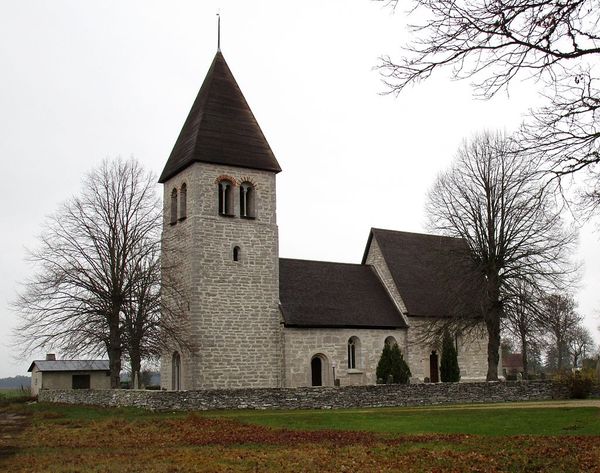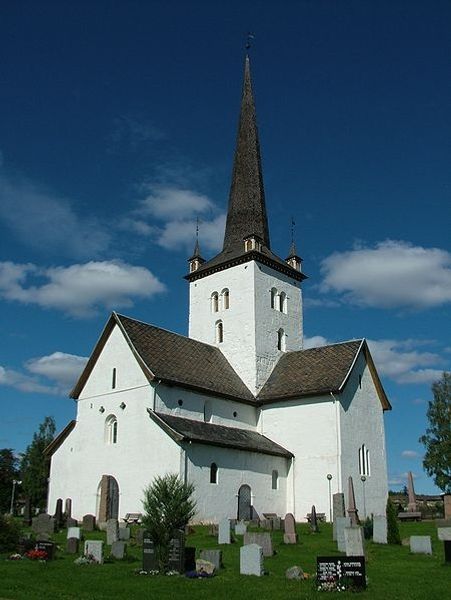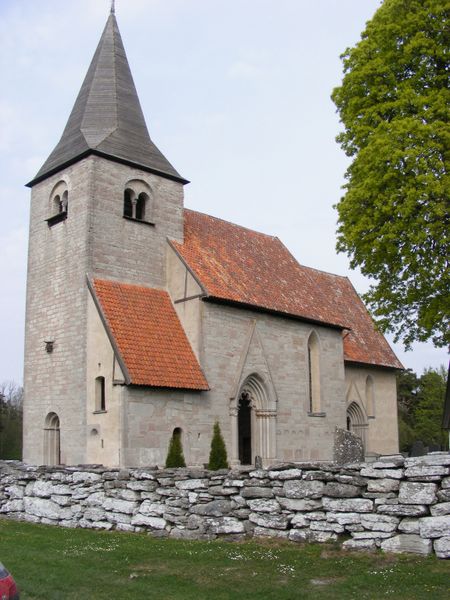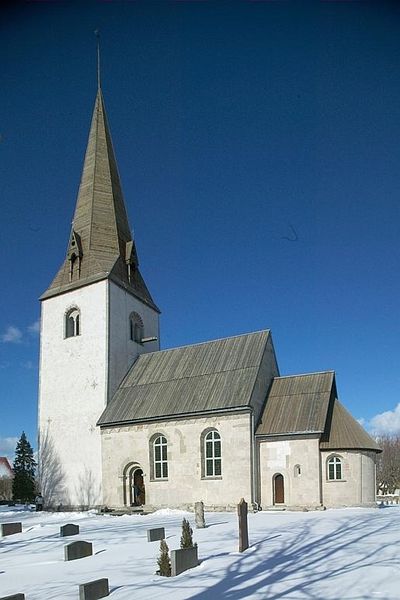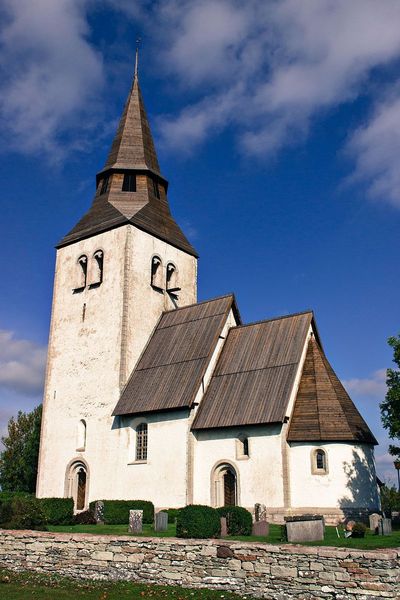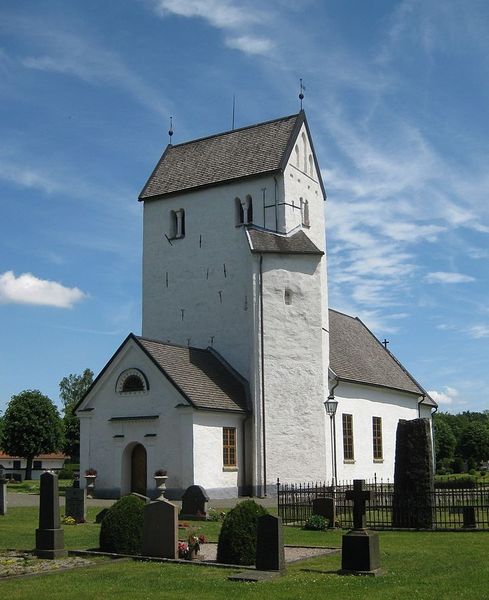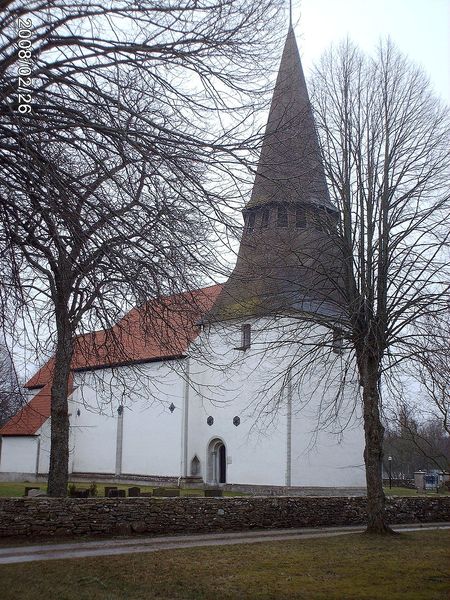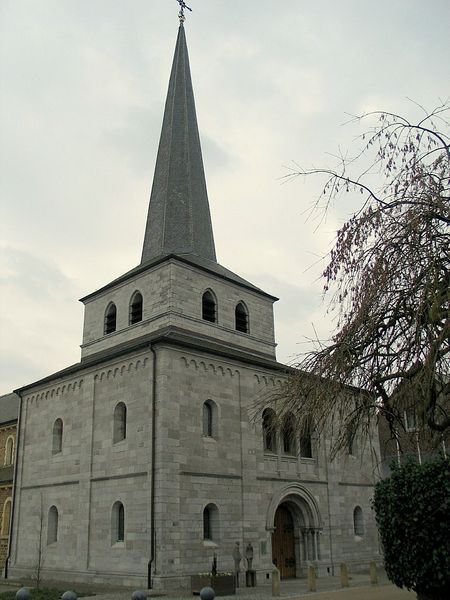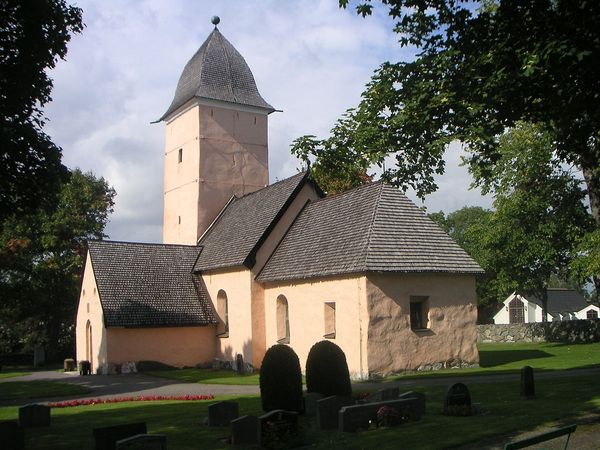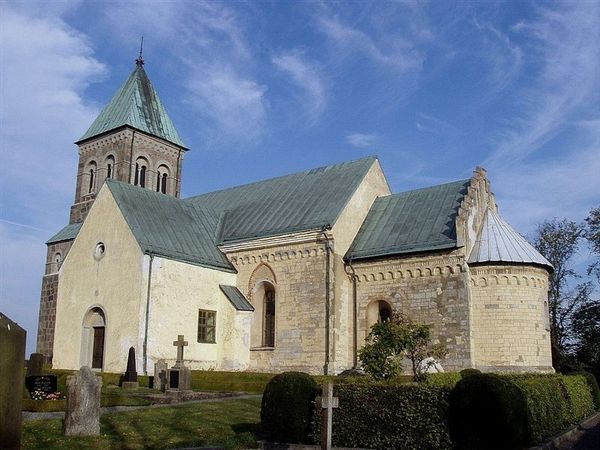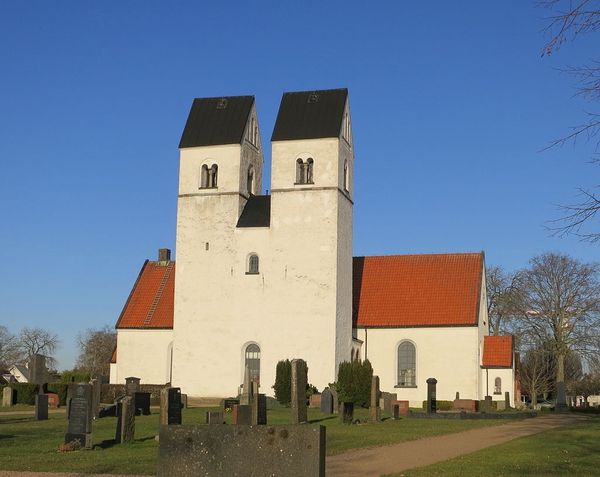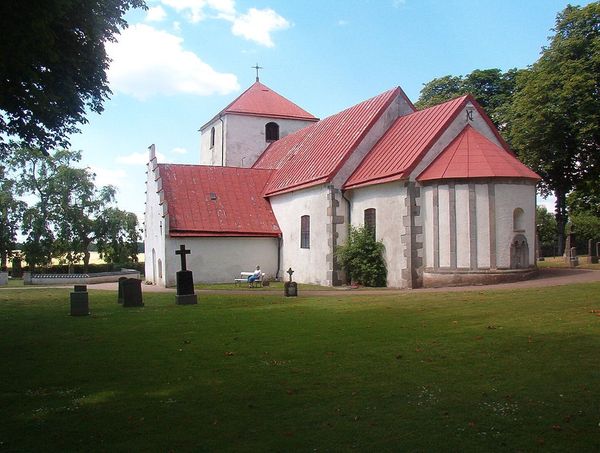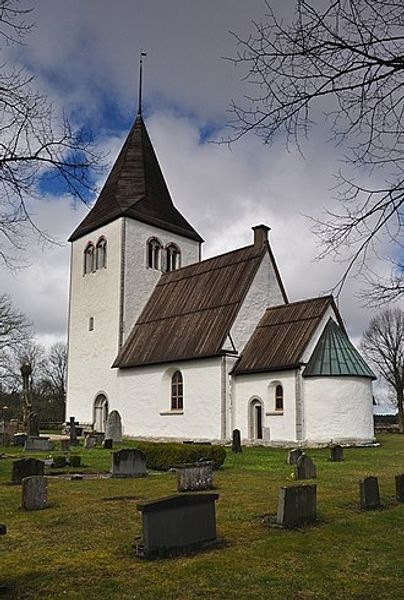
architecture
#
medieval
#
building
#
historic architecture
#
romanesque
#
arch
#
history-painting
#
architecture
#
historical building
#
building
Copyright: Public domain
Curator: We’re looking at Ekeby Church on Gotland, Sweden. Constructed around 1200, it's an example of Romanesque architecture. Editor: My first impression is one of austere beauty. The stark white walls against the grey wood and cloudy sky create a striking contrast. It feels incredibly solid and enduring. Curator: The materials certainly tell a story. The limestone, the timber shingles, all locally sourced, reflect the availability of resources on the island and the labor needed to extract, shape, and assemble them. How many hands and lives built this testament to faith? Editor: Agreed. I am drawn to the geometric precision. Notice the careful arrangement of forms. The interplay between the soaring bell tower and the solid mass of the nave – the way the architect used basic shapes, squares and triangles, to create a sense of harmony. Curator: And think about the social implications. A project of this scale implies a highly organized community, capable of mobilizing resources and labor. The church, in turn, would have served as a central point for communal gatherings, religious practice, and social control. Editor: Absolutely. The progression from the simple, arched doorways to the complex clustered windows higher up offers such visual richness. The architect is playing with light and shadow, subtly guiding the eye upwards towards the heavens. Curator: The architectural style reveals much about the period's cultural values, the development of new technologies, like stone vaulting, but the church’s evolution also involved shifts in power dynamics within the local community, the influence of trade routes and economic development in the Baltic Sea. Editor: It really comes down to the aesthetic impact. The subdued palette focuses attention on the architectural forms themselves, those perfect arches, each with slight variation, and the soaring bell tower. It is this clarity of design that lends the structure such a commanding presence. Curator: Seeing it in that light offers a completely new perspective on this building. The dialogue between form and material illuminates how architecture serves practical, aesthetic, and societal demands, doesn’t it? Editor: It truly does. There's something uniquely affecting about experiencing such clarity and intent, especially when seen in conjunction with history, like here, revealing its story of structural invention.
Comments
No comments
Be the first to comment and join the conversation on the ultimate creative platform.

